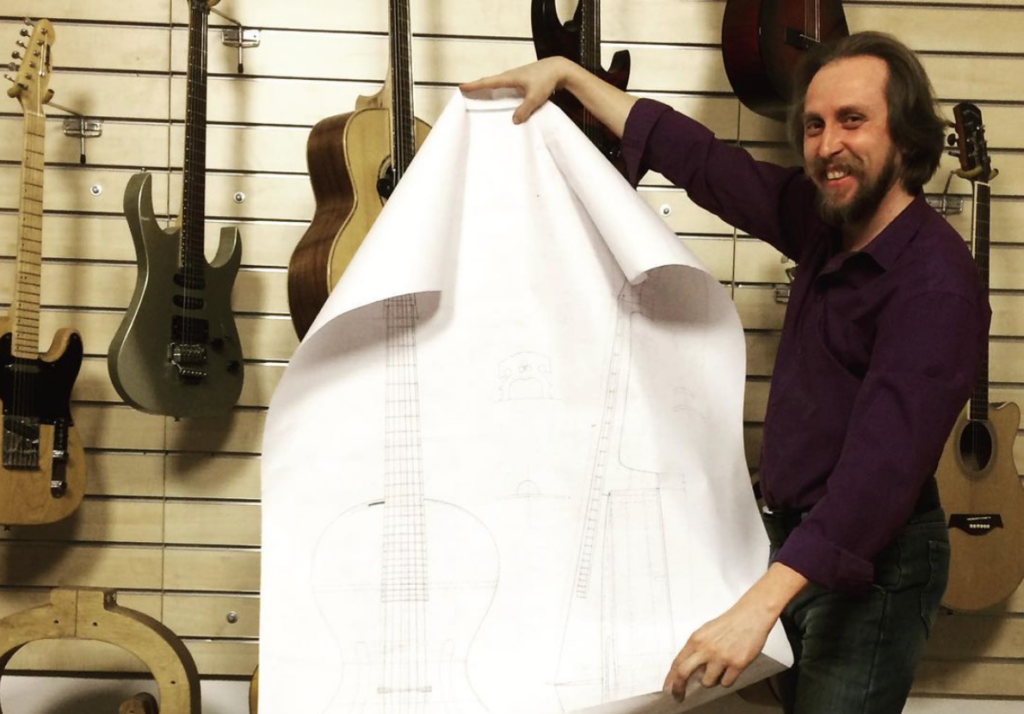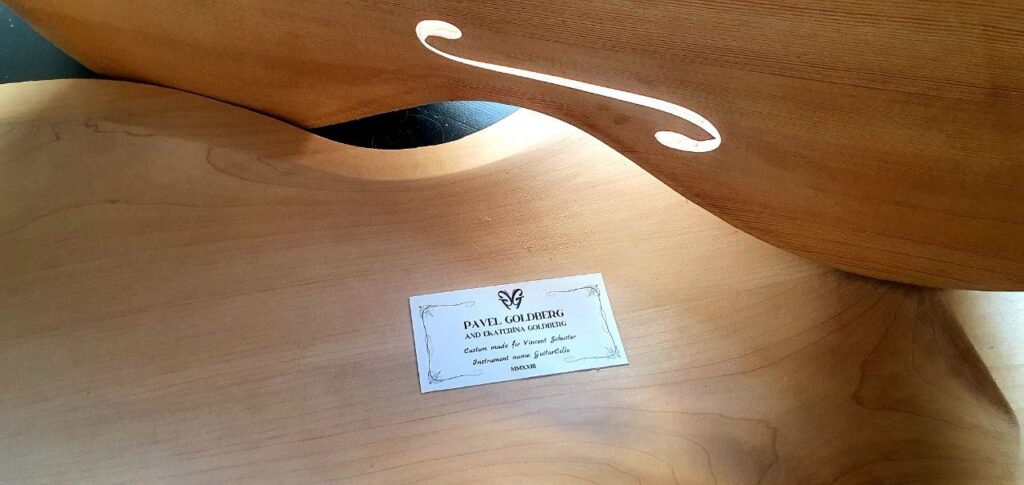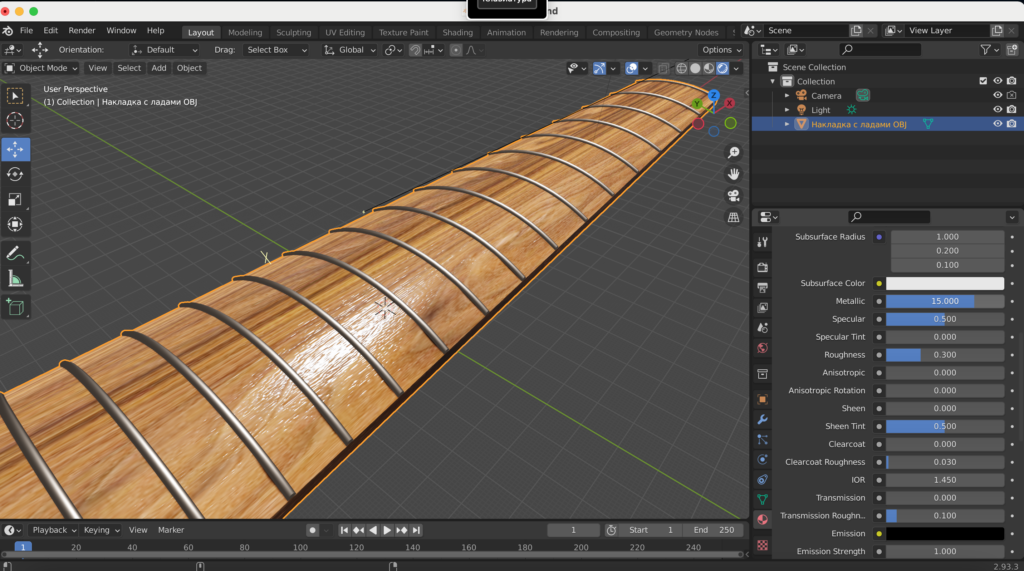My instruments are built from the old drawings of the original 19th century arpeggione.

I based my model on a surviving historical instrument made by Johann Georg Stauffer’s pupil Anton Mitteis. This arpeggione is kept at the State Institute for Music Research in Berlin. (Left picture).
Minor differences concern the width and profile of the fingerboard. This is necessary for confident sounding.
The historic instrument had a number of shortcomings that affected its popularity in the 19th century. You can read more about this in my article: Why is the Arpeggione Extinct?
The unique name for each instrument.

Each handmade arpeggione is one of a kind and is given a name. And you can choose a name for your instrument. In this image, you can see the label that is glued inside the body.
Fret positions based on scientific calculations, taking into account string tension.

The modern geometric calculation of fret position, which is used by all guitar masters and manufacturers, does not take into account that the strings have tension. The additional tension that occurs in the string when it is pressed to the fret increases from the first to the last fret. Many years of calculations and experiments have made it possible to create a more perfect calculation of the fret position. This has made it possible to build instruments with more accurate tuning throughout the entire range.
You can read more about it in my article: Calculation of the alternative apreggione (guitar) fret position.
Adjustable neck

Every musician knows that seasonal variations in humidity affect the wood and lead to changes in the geometry of the fingerboard and top deck. As a consequence, the string action changes. I believe that a professional concert and studio instrument should have fine adjustments. That’s why my instruments have two types of neck adjustment.
The first is a double-acting truss rod installed in the neck. With it you can change the fingerboard deflection both to one side and to the other side.
Adjustable string action

For my instruments, I use the historical method of mounting the neck. In the 19th century, luthiers of the Viennese school made guitars with a bolted neck.
This is an extremely convenient way to fine-tune your instrument. In a matter of seconds, you can adjust the string stroke for a comfortable playing experience.
And that’s just a small part of the features. Every detail of my instruments is carefully thought out.
Would you like to know more about my tools and ask any questions? Write to contacts about your wish to visit the online presentation.
